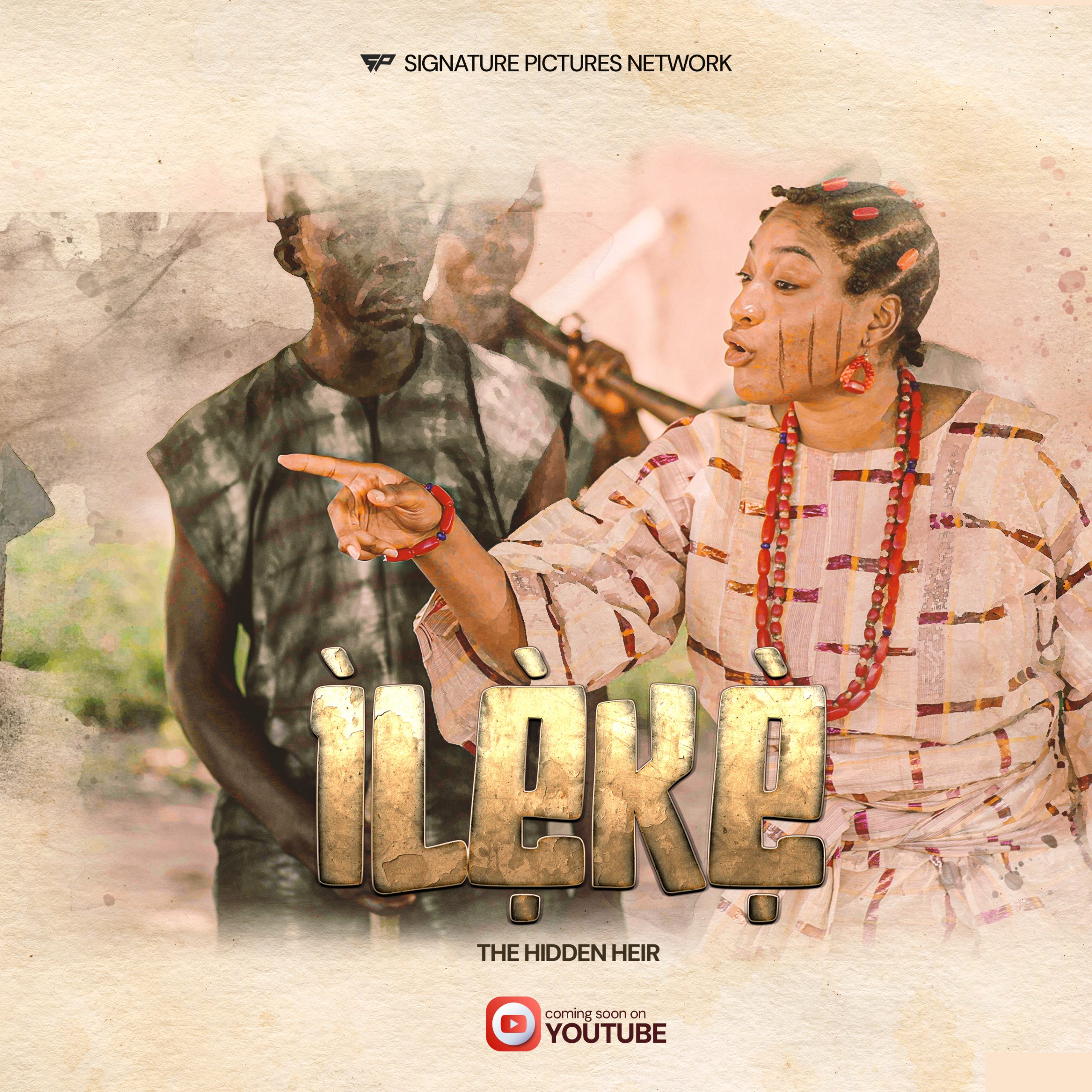As a director, every project is a journey that demands deep thought, careful planning, and a thorough understanding of the narrative’s heartbeat. When I took on the direction of Ileke, a story steeped in rich cultural context, emotional depth, and supernatural intrigue, I knew that I was not just telling a story, but creating an experience that would speak to universal themes such as redemption, the power of choice, and the unpredictable forces that shape our destinies. Ileke is a complex tale where character arcs intertwine, fate hangs in the balance, and the supernatural plays a significant role in the drama that unfolds. Through this post, I aim to take you behind the scenes and offer my insights into the vision, themes, and challenges in bringing Ileke to life.
The Vision Behind Ileke: A Story of Interwoven Fates
The foundation of Ileke is the exploration of human nature — the choices we make, the paths we follow, and how, sometimes, forces beyond our control can alter the course of our lives. At its core, the story revolves around several key characters: Abidogun, the Balogun’s son, who faces the consequences of his actions and is exiled; King Adeoye, a figure of power whose journey leads him to a mystical village; and the young lovers, Beyioku and Omolewa, who hold the key to an ancient mystery. All of these characters are tied together by themes of fate, power, and redemption, with each character’s journey offering insight into the choices they face and the unforeseen forces that drive them.
When conceptualizing Ileke, I wanted to build a world where the supernatural was not merely an afterthought, but an integral part of the narrative that informed and shaped the characters’ actions. This world is steeped in magic, but not in the conventional sense of spells and wands. Instead, the supernatural manifests through sacred objects, symbols, and the connections between individuals. The sacred beads, for instance, become a powerful tool in driving the narrative forward. While initially appearing to be just a gift, they gradually reveal themselves to be far more significant, carrying with them the promise of transformation.
The idea was to build a story that oscillates between personal growth and the mysterious elements of fate that guide the characters. There are no simple answers, and the audience is constantly questioning whether the characters have agency over their choices or if they are at the mercy of forces beyond their comprehension. This interplay between fate and free will is a key theme in Ileke and one that I sought to explore in depth, not just through dialogue and plot, but through the way the film is shot, the pacing of the story, and the emotional arcs of the characters.
The Exile of Abidogun: A Catalyst for Transformation
Abidogun, the Balogun’s son, is one of the most compelling characters in Ileke. His exile serves as a central catalyst for the events of the story, and his journey is a test of redemption. At the start, Abidogun is not a sympathetic character; his actions have led him to be exiled by his people, and the villagers are more than happy to see him go. There is a sense of relief among the villagers, particularly the two princesses, who are happy to be rid of him. What struck me most when developing Abidogun’s character was the idea that exile is not just a punishment but also an opportunity. It is a chance for Abidogun to reflect on his past, change, and hopefully find redemption.
As a director, I wanted to portray Abidogun’s exile as more than a mere consequence of his actions. It represents a moment of reckoning — a turning point where his future is uncertain, and the path he chooses will determine his ultimate fate. Abidogun’s journey is one of introspection and transformation. The stakes are high: he can either remain consumed by his past mistakes, or he can rise above them, learn from them, and evolve into a different man. This internal conflict is what makes his story compelling, and it is a journey that is deeply intertwined with the fate of the other characters.
In terms of visual storytelling, I chose to depict Abidogun’s exile as a solitary, almost mournful journey. His departure from the village is marked by wide shots of open roads, barren landscapes, and a sense of isolation. The goal was to emphasize how this journey is not just physical but emotional and psychological. Abidogun is alone, and his redemption or downfall rests entirely on his shoulders. This isolation is amplified by the fact that his journey is parallel to that of King Adeoye, whose actions will also shape the fate of Agbamojo.
King Adeoye’s Mystical Journey and the Role of the Sacred Beads
King Adeoye’s presence in Ileke introduces a different type of power dynamic. As a king, he is a figure of authority, wisdom, and experience, but his journey leads him to Agbamojo, where he encounters two young lovers, Beyioku and Omolewa, whose love is threatened by unseen forces. It is through this encounter that King Adeoye’s fate becomes intricately linked to the couple’s, and ultimately, to the fate of the entire village.
The sacred beads given to Beyioku and Omolewa are symbolic of more than just a king’s gratitude. These beads, while seemingly innocuous at first, are imbued with mystical significance. The beads represent the forces of fate and transformation, and they become a central plot device in the narrative. I wanted to explore the idea that even the smallest of gifts — given with good intentions — can hold the power to change lives in profound ways. The beads act as catalysts for growth, but their true power is not immediately apparent.
When filming the scenes involving the sacred beads, I paid close attention to how the beads were framed and presented. They had to feel like objects of weight and significance. The lighting, close-up shots, and the way characters interacted with them were all designed to give the audience the sense that these seemingly simple objects had a much deeper, almost sacred power. The challenge as a director was to maintain an air of mystery around the beads — to show that they held meaning without revealing their true purpose until the right moment.
The gifts given to Beyioku and Omolewa are not just tokens of thanks; they are stepping stones in their journey. The beads symbolize their connection to King Adeoye and to the larger forces of fate that are pulling them toward a greater purpose. As the director, I wanted to craft moments that were both intimate and mystical, emphasizing the importance of these seemingly simple gifts. They are imbued with the potential to shape the destiny of the characters, yet the audience remains unsure of how — or if — that potential will be realized.
The Plot Twist: Shifting the Narrative and Raising the Stakes
The plot twist in Ileke is one of the most integral aspects of the story. It’s not just about shocking the audience; it’s about revealing layers of meaning that were hidden in plain sight. As the story progresses, we learn that the sacred beads are not merely symbolic — they hold an actual power that will change the course of events. What appeared to be a simple gesture of kindness by King Adeoye turns out to be much more significant, with far-reaching implications for all the characters.
For me, the plot twist was about challenging the audience’s assumptions. When the beads are first given to Beyioku and Omolewa, the audience believes they are merely gifts. However, as the story unfolds, the true significance of these beads becomes clear. They are not only tied to the lovers’ future but also to Abidogun’s journey. I wanted the audience to slowly realize that all the characters are connected in ways that go beyond their immediate relationships — that there are unseen forces at work, shaping their destinies in ways that are not entirely under their control.
The twist also speaks to the idea of redemption. Abidogun, who begins the story as an outcast, is later revealed to be intrinsically tied to the mystical forces that influence the lives of the other characters. His exile is not just a punishment, but a necessary step in his own transformation. The beads are a symbol of the opportunity for change, and it is through their power that Abidogun is ultimately given a chance at redemption. This plot twist not only shifts the course of the narrative but also deepens the themes of fate and personal growth.
Conclusion: The Making of Ileke
In the making of Ileke, every decision — from the characters’ arcs to the supernatural elements — was carefully crafted to explore the complex themes of power, fate, and redemption. The characters are not defined by their pasts, but by their ability to change, adapt, and grow. The sacred beads, the exile of Abidogun, and the paths of King Adeoye and the lovers are all part of a larger, interconnected web of fate that challenges our notions of free will and destiny.
As a director, the goal was to create a narrative that resonated on multiple levels. Ileke is not just a story of magic and mystery; it’s a reflection of life’s unpredictability, the power of choice, and the unseen forces that shape who we are and what we become. Through the plot twists and the intertwining of characters’ destinies, Ileke aims to leave the audience questioning what it means to be in control of one’s own fate and whether, in the end, we are ever truly the architects of our own futures.
4o mini

